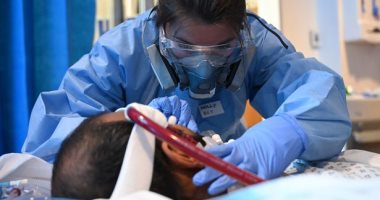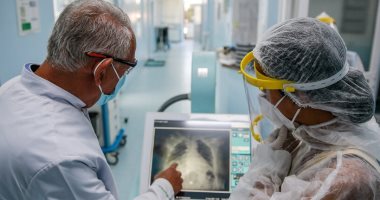Observational clinical research of coronavirus patients can help doctors better understand how the virus, which has killed 1.7 million people worldwide and devastated economies around the world, does not follow a unified path.
According to a site report “thehealthsite“The virus cannot be predicted predictably and scientists have kept on alert during the past year, as many infected patients do not show symptoms or show very mild symptoms, and others, especially those with comorbidities, can develop acute clinical disease accompanied by infection. Atypical pulmonary and multiple organ failure.
To better understand the disease, researchers from the University of Alabama in Birmingham conducted an observational study of “persistent dysregulation of cellular immunity in individuals who recover from Corona infection.”
Immune dysfunction –
Understanding the immune system response
For the purpose of the study, the researchers obtained blood samples and clinical data from 46 hospitalized corona patients and 39 non-hospital individuals who had recovered from confirmed virus infection, and both groups were compared with healthy and negative controls for Corona.
Most importantly, most of the individuals in the hospitalized group had active corona viruses in their blood and were in the hospital at the time of sample collection, and all individuals in the non-hospital group were in the recovery period at the time of sample collection.
From blood samples, researchers were able to separate specific subsets of immune cells and analyze cell surface markers, and with this complex information, immunologists can analyze how each individual’s immune system responds during infection and during the recovery period.
Some of these results could also reveal whether immune cells have been activated and depleted due to infection, and debilitated immune cells may increase susceptibility to secondary infections or impede the development of protective immunity to Corona.

Monitor changes over time
In addition, the researchers were able to analyze changes over time in two ways. The first was to monitor surface changes over time, which were defined as days since symptoms appeared for samples that had not been hospitalized.
The second is a direct comparison of the frequencies of these signs between the first and second clinic visits for non-hospitalized patients, for whom blood samples were collected at two consecutive time points.
The researchers observed, systematic markers of activation in hospitalized patients, and they also found that many of the signs of activation and fatigue were expressed at higher frequencies in convalescent samples outside the hospital.

Immune dysregulation in non-hospitalized patients
By looking at these signs over time, it was clear that the immune dysregulation in non-hospitalized individuals was not resolved quickly. Moreover, the irregularity of T cell activation and signs of fatigue in the non-hospitalized group were more pronounced in the elderly.
The researchers said: “To our knowledge, this is the first description of persistent immune dysregulation due to the Coronavirus in a large group of convalescent patients outside the hospital, as signs of activation and cellular fatigue increased over time, and these results demonstrate the continuous nature of the adaptive immune system changes observed in the virus.” Corona and indicates long-term effects that may affect the preservation of immunity against it.
– .

![[사회]1,029 new confirmed cases on New Year’s Day… [사회]1,029 new confirmed cases on New Year’s Day…](https://www.ytn.co.kr/img/comm/ytn_sns_default.jpg)